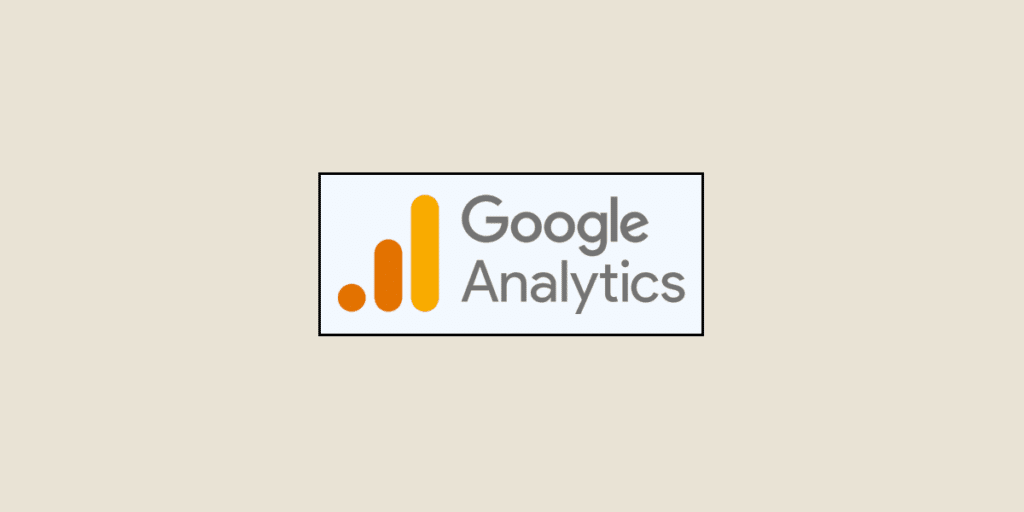The use of a website has become essential for any company wishing to develop its business online, but many of them don't know how to optimise their traffic in order to improve their conversion rates via their website.
In fact, you could be spending a large budget to drive traffic to your website, but suffering from a low conversion rate due to poor optimisation of your user journey.
Google analytics has been specially designed to help businesses optimise website traffic through data analysis. Developed by Google and released in 2005, it is a tool for analysing website traffic and presenting the data in pre-configured, customisable dashboards.
A host of indicators can be used to improve traffic, including traffic sources, conversions achieved, mobile devices used by visitors, natural referencing optimisation and social networks, to name but a few.
Who can use Google analytics?
Google analytics is available free of charge, all you need is a Google account to use the tool, which is fully customisable and is aimed at all businesses that use their website as a means of conversion and need to obtain information about their web traffic.
Although Google analytics is free, there is a premium solution for larger companies.
How can you use Google analytics to optimise your traffic?
Google analytics dashboards are data visualisation tools used to analyse website traffic.
Google analytics offers dashboards for analysing the most important KPIs of a website in order to help a company optimise its traffic.
The user journey is very important for converting leads into customers. If a large number of leads arrive on your website but do not go any further than the home page, your marketing strategy will not be profitable.
To optimise your traffic and ensure that the most qualified leads are converted, you need to analyse the right data about the user journey.
The most important data to analyse includes :
- Number of visitors
- Number of sessions
- Bounce rate
- Session length
- Live visits

Precise visibility of a website's various traffic acquisition channels
The performance of a website is not just about the user journey. The way in which leads are acquired is just as important. Google analytics provides data to help companies optimise their acquisition channels.
It is important to know the exact sources of your audience in order to optimise your traffic and, by extension, your conversion rate. The sources that Google analytics can analyse include :
- Organic sources;
- Social networks;
- Direct sources (web users have searched for your site directly);
- Referencing (via an external link);
- Other sources (emailings, tags).
As well as acquiring significant traffic, it is vital for a company to attract the right audience. To do this, you need to be able to analyse your audience to determine whether it corresponds to your target audience.
Google analytics provides detailed information about your website’s audience, including :
- areas of interest
- Geolocation
- Type of device used
How can Google analytics help you improve your ROI?
Knowing whether the budget we allocate to our marketing campaigns is profitable can be quite complicated, and it could be that a company is misusing the various channels without realising it and therefore losing money on poorly targeted marketing campaigns.
ROI is used in marketing to calculate the return on investment of a campaign. Google analytics can be used to calculate ROI in order to optimise future marketing campaigns.
Google analytics allows users to create objectives and analyse their completion.
The first step in calculating ROI using Google analytics is to set objectives.
In the case of a merchant site, for example, you could set a conversion rate target of 20%. This means that 20% of the leads arriving on your site end up making a purchase on the merchant site.
Another example, for a service company, would be to set a target of 80% of leads arriving on your site ending up making an appointment.
IMPORTANT: the objectives must be challenging but realistic, intelligent and achievable.
Once the objectives have been set, it’s important to make the most of your leads’ actions on your website. For example, if out of 100 appointments made, 30 prospects buy a product for €350, you will earn €10,500. On average, a lead who makes an appointment is therefore “worth” €105.
If you then calculate the price of a lead who makes an appointment, you will have a good idea of the profitability of your marketing strategy.

Analyse the different sources of conversion
Some sources are more profitable than others when it comes to acquisition, and Google Analytics allows you to calculate the conversion percentage by source.
For example, a company could convert 80% of leads from a “paid search” source but only 1% from a “social network” source. A more in-depth analysis would enable you to decide how best to target advertising on social networks, for example.
Google analytics can also be used to assess the quality of a source, as it can provide information about the leads acquired, such as centres of interest and geolocation.
For example, a source could obtain a large number of leads who book appointments on your website, but the conversion rate could be low because the leads acquired are not in the right geographical region.
Google analytics could therefore help you target your audience more effectively.
Conclusion
In conclusion, by using Google Analytics strategically, businesses can make informed decisions to optimise their user journey, target the right audiences and improve profitability. It’s an essential tool for any business that wants to exploit the full potential of its website and maximise its online results.










